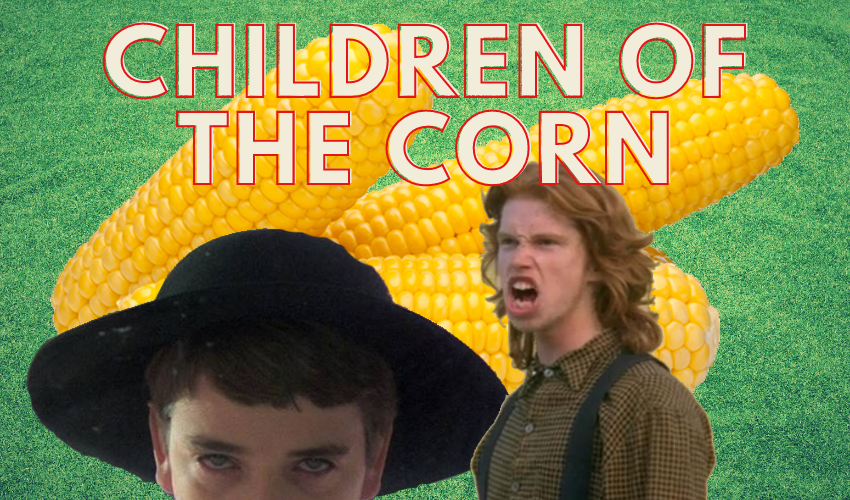
Review: ‘Children of the Corn’ is a Dead Kid in a Trunk
Man, this movie has EVERYTHING! Children, corn, the mom of John Connor…um, corn.
This is a classic, folks. It’s hard to review something that’s so classic and iconic. So, I’ll go through general deets before I get into my notes and thoughts. Cool?
The Plot (Spoilers-free):
A young doctor (Peter Horton) and his wife (Linda Hamilton, pre-Terminator) are on their way to Seattle, where he will be establishing himself as a doctor. While driving through Nebraska, they meet with an unexpected tragedy…besides being in Nebraska. Zing!
However, things are not as they appear to be as the small town they stop in seems abandoned. But the couple soon discover that they are not alone and are at the heart of a merciless cult of murderers. Will they be able to survive when the murderers themselves are but innocent children?
Thoughts (Spoiler-free):
Let’s talk about the cinemotagrapher for a hot sec, yeah? The cinematography is beautiful and really showcases both the beauty of the farmlands and the brutality of the small-town cult.
Suresuresure, but the cinematographer, Raoul Lomas…or should I say… ::rips the mask off::
“Harry Flecks” OR… ::rips another mask off::
“Harry Flex” OR… ::rips final mask off:
Brazilian cinematographer, João Fernandes!!!
João Fernandes got his start by filming adult classics in the heyday of adult classics – the magical 1970’s. This includes the iconic Deep Throat, Wet Rainbow, and The Devil in Mrs. Jones.
In fact, he has an enormous amount of experience under his belt, so to speak, including a plethora of horror, tv movies, and had a hand in Chuck Norris’s foray into Turner and Hooch territory with the sadly disappointing, Top Dog.
Actually, a lot of his later work was with Chuck Norris and Cannon films.
Anyway, I just thought that was a fun thing to know about Children of the Corn and it’s working parts.
Brain Roll Juice (Spoilers):
Okay, maybe not so much brain roll juice (although I was tempted by the corn-Jesus iconography in this), but I want to talk about some random thoughts.
1st Thought:
Just imagine this: half of the movie takes place with a child’s dead, decomposing body in the trunk of our protagonist’s car. Just imagine that every time Malachai stalks around screaming, “OUTLAAANDER!!!!” and when Burt decides to dick around at the school for a while.
Also, at the end of the movie (these people will be going to prison, no doubt), they leave the car with the dead body in the trunk and an unconscious, concussed child in the front. Aaaaand…
That’s where the movie just limply ends. The adults joking about letting two orphans kick around with them for a little while, like some cousin who just got laid off and needs a place to crash while getting back on their feet. I mean, dude, you just saw confirmation that an entity beyond your conceptions and faith exists in this world and…like, whatever, I gotta get to Seattle. Oh, but, should we tell the cops about trunk kid? Ehhhh…?
2nd Thought:
Job and Sarah are basically un-emotive baggage until the end when Job becomes the only competent one. Throughout the film, they seem to just…be there. And there’s a reason for that – they aren’t in the original short story.
But the strange part is that the movie has them so…bland. Like two scoops of vanilla ice cream at Baskin-Robbins, there’s so little to them in the midst of chaos and flavor.
They do very little during the story besides playing games, drawing people dying and listening to vintage records- Oh, I get it. They’re hipsters. Well played, movie. Well played.
3rd Thought:
Let’s talk five hours about Malachi and Isaac. I will never grow tired of Malachi screaming, “OUTLANDER!!”. I need this on a ten-hour loop.
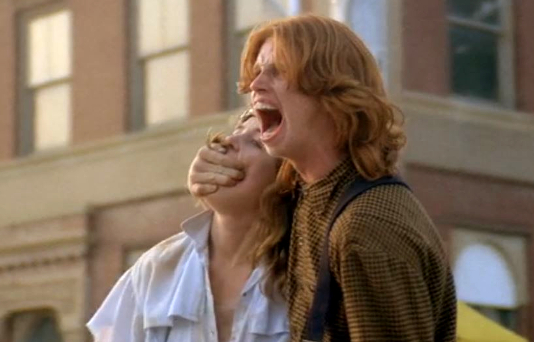
Honestly, John Franklin as Isaac and Courtney Gains as Malachi are the ABSOLUTE best thing about this movie. They’re both amazing actors who took it to a ten. Their performance carried most of the scenes and I would watch their new HBO mini-series in a heartbeat.
The characters themselves have a terrific chemistry – a blend of questioning loyalty, shaky respect, and utter abhorrence towards each other. Malachi begrudgingly follows Isaac’s fury and vision, but with a glare and whispered threat. Isaac resents Malachi, but needs his support as a right hand man to get shit done.
Honestly the energy between them feels like I’ve seen this somewhat recently…It’s strangely familiar…Down to red hair and dark hair…

Bottom-line:
Corn and kids ain’t scary, but it’s a fun romp for you and your OUTLANDER!!!!
 (3.5 / 5)
(3.5 / 5)
Movies n TV
Wheel of Time A Question of Crimson Is a Political Espionage Delight
Episode two of Wheel of Time felt like the beginning of a long journey. Stories are unfolding, lives are changing, and blood is spilling.
Let’s discuss.
The story
We begin this episode in the past with Elayne’s mother, Queen Morgase. It turns out her rise to the throne was a bit, shall we say, cutthroat. So when she shows up at the White Tower, Siuan is concerned.
She might have reason to be, too.
Meanwhile, Rand, Egwene, Moiraine, Lan and Aviendha are in the Spine of The World. As they travel through some of the most breathtaking lands I have ever seen on a TV show, Egwene is plagued with nightmares. We think at first that’s just her trauma working itself through her system. But we soon find out that it might not be that straightforward.
Finally, Perrin returns home to heal after his hand is almost cut in half. But when he gets there he finds the town has been infested by Children of The Light. And they’re looking for him.
What worked
There was something heartwarming in this episode about political espionage and choking religious persecution. And that is Elayne’s relationship with her family.
I have consumed a lot of fantasy content with royal families. And I have never once heard a princess call her mother ‘Mum’. I’ve never seen royal siblings get along. And I have sure as hell never seen a princess have a good relationship with her step-parent.
This was refreshing. Even though Queen Morgase is kind of a horrible person she seems like a good mother. And that’s an unexpected delight.

Of course, this is just one storyline among many. And while this can sometimes be overwhelming, in this case it wasn’t.
I’ll be honest, some of these storylines are going to drag for me. I know this because I’ve read some of the Wheel of Time books and I have an idea that not all the characters exactly pique my interest.
No one likes all the characters. No one likes all the storylines. While I am here for the political espionage between Queen Morgase and Siuan, not everyone likes it. While others might be fascinated with Selene trying to win Rand back, I couldn’t care less.
Having multiple storylines keeps everyone’s attention better. So long as things don’t get out of hand. Things can easily get out of hand. But this seems to be managed well.
So far.
What didn’t work
As I mentioned above, I’m not thrilled with Rand’s story at this point. And while it’s fine to not like a storyline when there are this many to choose from, it’s not fantastic that the one I like the least is the one involving our two main characters. And anytime we were with the team at the Spine of The World, the only thing that brought me joy was Moirain’s hat. It reminded me of Stockard Channing’s hat in Practical Magic.
The problem is that Rand is Charlie Brown with controversial magical powers. He is boring, serious, and pessimistic.
And yes, I understand that he has a heavy emotional burden and he’s the Dragon Reborn and that’s quite taxing and all. But let’s be fair, there isn’t a single person in this show that doesn’t have a heavy burden. And most of them manage to be fun occasionally.

All that being said, this episode of Wheel of Time did exactly what it needed to do. It set up conflicts at each of the three locations. It established emotional ties between the characters and the events. And it established goals for everyone.
This was, in short, a solid episode. Not groundbreaking, not mind-blowing or life changing. It was simply good. It was entertaining and moved the plot forward.
Well done.
 (3.5 / 5)
(3.5 / 5)
Movies n TV
Wheel of Time Returns With A Bang
Wheel of Time is back for season three. There are mixed feelings regarding this. Last season, there were some serious pacing issues. And some serious sticking to the book’s storyline issues. But we’re two seasons in, and we don’t give up so easily. So let’s dive into episode one, To Race the Shadow.
By the way, I highly recommend watching this episode with the subtitles on. You’ll see why.
The story
We begin this episode with Liandrin facing a trial of sorts for her rampant betrayal. She does her best to gaslight her Aes Sedai sisters into thinking that Siuan Sanche is the real traitor.

When that doesn’t work, she reveals how many Black Aes Sedai have actually infiltrated the tower.
Spoiler, it’s a lot.
In the aftermath, our whole team gathers to drink and enjoy one night of relaxation before they head out to the Tear to form an army for Rand. All is going well until they’re attacked by myriad creatures and a sentient axe.
What worked
This episode was long. It had a run time of an hour and eleven minutes. And a lot of that run time was spent in heavy dialog scenes.
Fortunately, these were well-done scenes.
If you’re going to have a lot of talking scenes, there are good ways and bad ways to do it. Last season, we saw lots of examples of the bad way to do it. But this episode did it well. For one thing, other things were going on while conversations were taking place. The characters are drinking, playing games, walking through an interesting city. And the scenes themselves didn’t stretch out. They weren’t repetitive. We heard what the character had to say, then we moved on.
It was also nice that the point of these scenes wasn’t just info dumps. We had character development. We had romantic interactions. We had plot development and foreshadowing.
Overall, this episode felt like what it was. A moment of calm before a storm.
Taking a step back, I’d be remiss if I didn’t address the fight scene at the start of the episode. Because it was epic.
The magic looked amazing. The martial arts that went along with it looked fantastic. The costumes were beautiful. It was just incredibly fun to watch.
More than that, it was emotional. We lost some characters in that fight that were important. And it was clearly emotionally shattering for many of our characters, who found themselves betrayed by people they trusted.
So many of them.
It was a great way to open the season.
What didn’t work
Despite that, this episode wasn’t without its flaws.
First off, there were a lot of dialog scenes. And they were good scenes, as I’ve already discussed. But it was one after another after another. And when your episode is, again, an hour and eleven minutes, it’s maybe a little much to have so much chit-chat. Couldn’t some of these conversations, important as they were, have been moved to maybe another episode?
Finally, I want to talk about Egwene’s travel through the arches.

I feel like maybe there were some deleted scenes here. Because there must have been more to that visit than what we saw, right?
We could have seen Egwene battle Rand. That would have been badass and emotionally devastating. We could have seen her with a quiet life with Rand back home at the Two Rivers. We could have seen anything except for the quick clip of Rand in a bloody river, followed by Egwene being shoved back out in a bloody shift.
No products found.
Bad job. But at least it wasn’t an extended scene of Moiraine collecting bathwater, and then taking a bath while looking sad. If we’d started this season with another scene like that, it might have broken my brain.
Amazon dropped the first three episodes at once. So we’ll be back soon to talk about episode two. See you then.
 (4 / 5)
(4 / 5)
Movies n TV
Entertaining as hell: Eight Legged Freaks (2002) Review
Early 2000s is a special era for the industry. It accepts the cheesiness and corniness of movie making, in turn producing some gems in their own right. Eight Legged Freaks starring David Arquette and young Scarlet Johanson is a horror comedy about giant spiders who overtake a small town. As crazy as that premise sounds, the movie surprisingly has a ton of heart and is super entertaining. Let’s review, shall we?
Plot
We start Eight Legged Freaks with a shot of toxic waste spilling into the water supply of Joshua, a spider farm owner. He is friends with Mike, one of our protagonists, who is a science geek and a spider enthusiast. Mike notices something quite right upon visiting Joshua, but no one takes him seriously. We are then introduced to the rest of the crew. Mike’s mother Samantha, the town sheriff, is too busy chasing Ashley, his sister, who is dating the town mayor’s son Bret (something Samantha does not approve of). We also have Chris, who returns to the town to save his father’s legacy in the town mines. He has opposition from Wade, Bret’s father, who wants to use the mines for his business ventures. Lots of drama going on that will only get juicier once the spiders get loose.
The creepy crawlies quickly dispose of Joshua and make their grand appearance after Ashley rejects Bret’s advances, abandoning him in the middle of a desert. A glorious chase sequence ensues as the spiders make their way towards the town, wreaking havoc on its residents. In a true horror fashion (which the movie acknowledges), it takes some convincing from Mike and then from Samantha for the town to take the threat seriously. The tongue-in-cheek style of narrative adds the comedy aspect to a movie that would otherwise burn out fairly quickly.
The remaining characters hide out in a shopping mall as it’s the only somewhat sturdy building in the area. This doesn’t last long as the spiders break in, forcing them to run through the mines. Their resources to fight the creepy crawlies off are limited as the methane gas doesn’t allow them to use firearms. Such conditions require resourceful thinking from Chris, who uses perfume to fend off the leader of the spider group and save himself during the climax of the movie.
Character dynamics are not forgotten once the action kicks in. We have Chris confessing his long-term feelings for Samantha which she knew all along, which provided some comedic relief. Bret also reunites with Ashley and apologises for being an asshole. Mike finally gets the appreciation he deserves as his knowledge saves the townsfolk more than once during the whole ordeal.
We end the movie with the town’s radio show person telling the story as an urban legend during his segment. This brings it into question – how much of it happened the way he said it did? We can only guess…
Overall thoughts
Eight Legged Freaks is a fun creature feature with some self-aware commentary on genre tropes that doesn’t take itself too seriously. The acting is good, the pacing fitting and the characters are likeable enough for you to want them to make it through. Definitely a must watch, if you don’t suffer from arachnophobia, that is.
 (5 / 5)
(5 / 5)
- What do you get when you cross toxic waste with a bunch of exotic spiders? Eaten! The townies of Prosperity, Arizona will all become a screaming smorgasbord if mutated arachnids as big as SUVs have their way in this comedy/horror crowd pleaser whose creators include the producers of Independence Day and Godzilla
- Spiders that leap like gazelles, web-spitting spiders, spiders that suck your insides out as if through a straw—they’re all among the behemoths conjured up by an inventive effects team
- David Arquette (Scream) leads the two-legged stars, mobilizing the citizenry in a last-ditch fight to survive
Last update on 2025-03-10 / Affiliate links / Images from Amazon Product Advertising API





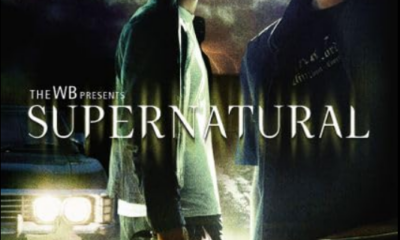



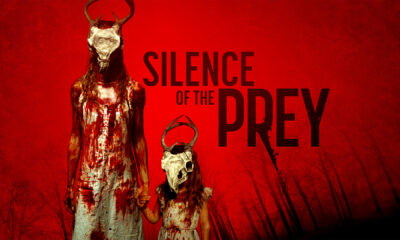

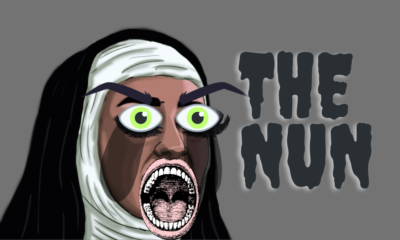

Audrey III
February 26, 2021 at 12:25 am
BRB got to update my Kylux Childern of the Corn au fanfic.